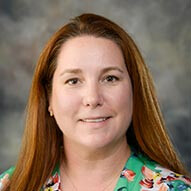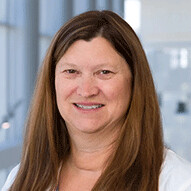Congenital and hereditary orthopedic disorders
Children’s Health℠ Orthopedic program is among the top five in the nation. If your child is diagnosed with a congenital and hereditary orthopedic disorder, our specialists have the expertise to work together to provide outstanding care that ensures the best possible outcome for your child.
What are congenital and hereditary orthopedic disorders?
An orthopedic disorder is any abnormality or deformity of the skeleton and the structures that support the skeleton.
Congenital disorders are present from birth.
Hereditary disorders are transmitted from parents to their children through the genes.
There are many different types of congenital and hereditary orthopedic disorders, and in most cases, children respond very well to treatment.
What are the different types of congenital and hereditary orthopedic disorders?
Metatarsus adductus - This is a common type of foot deformity that may be caused by the infant’s position in the womb. Children who have the condition are born with the front half of the foot turned in abnormally.
Risk factors - It occurs twice as often in boys as in girls and may appear in one or both feet.
Clubfoot (talipes equinovarus) - This is a congenital deformity. An infant with clubfoot is born with a short, broad foot, the front part of which is turned inward. As with metatarsus adductus, one or both feet can be affected.
Developmental dysplasia of the hip (DDH) - This is a congenital disorder in which the ball of the long bone in a child’s leg, called the femoral head, easily slips in and out of the hip socket.
Congenital limb defects - This occur in the womb, when a limb or a portion of a limb fails to develop completely or normally.
Osteogenesis imperfecta (OI) - This is sometimes called brittle bone disease or OI. It is an inherited disorder that causes bone collagen to form incorrectly or inadequately. As a result, a child can have very fragile bones and teeth that break easily.
Muscular dystrophy - This describes a number of inherited disorders that cause a child’s muscles to break down and become weak.
What are the signs and symptoms of congenital and hereditary orthopedic disorders?
Symptoms of congenital and hereditary disorders vary, depending on the type of disorder your child has.
Metatarsus adductus - In infants with metatarsus adductus, the front of one or both foot bends inward.
Clubfoot (talipes equinovarus) - With clubfoot, an infant’s foot points downward and turns inward. As with metatarsus adductus, one foot or both feet may be affected. If it’s not treated before your child starts walking, clubfoot can cause your child to walk on the sides of the feet.
Developmental dysplasia of the hip (DDH) - Developmental dysplasia of the hip might not be noticeable, or you may observe that your newborn has less movement on one side of the body. You might also notice uneven skin folds around the thighs and on each side of the buttocks. One leg might appear shorter or turn out more than the other.
Osteogenesis imperfecta (OI) - Symptoms of osteogenesis imperfecta can be mild or severe. Children might be short or small, have weak muscles or a curved spine. Their bones fracture easily.
Muscular dystrophy - Symptoms may not appear until a child is older and they can vary depending on the type. In the most common form in children, called Duchenne muscular dystrophy, children fall more often than their peers do, walk on their toes and often have a delay in walking and language. They may have large calves and may have difficulty getting up normally after sitting or lying on the floor.
Take your child to the doctor if you notice the following symptoms:
A fracture in a bone
Weakness in arms and legs
Clumsiness and frequent tripping or falling for your child’s age
Delays in skeletal development
How are congenital and hereditary orthopedic disorders diagnosed?
Pediatricians and orthopedic specialists are familiar with normal skeletal development and movement. They often can tell when an infant is born whether a foot is formed improperly for example, and how severe the condition might be.
Many congenital and hereditary orthopedic disorders, such as developmental dysplasia of the hip (DDH), are diagnosed primarily with a thorough physical examination.
Other times, children may need laboratory tests or X-ray and other imaging tests:
Imaging - Often, a physician confirms a diagnosis of an orthopedic disorder with an X-ray. For example, a bone density test is a special X-ray exam that can help your doctor diagnose osteogenesis imperfecta.
Prenatal ultrasound - Sometimes, a physician can diagnose a congenital disorder such as clubfoot even before your infant is born by looking at ultrasound images of the fetus. Ultrasound uses high-frequency sound waves and echoes to create images on a computer monitor. Because it doesn’t involve radiation, it may be used frequently during pregnancy to examine your baby in the womb.
Ultrasound - This also might be used in place of X-rays to diagnose other disorders such as hip dysplasia (DDH), especially in infants.
Laboratory tests - These check for certain proteins in your child’s blood that can provide helpful information.
Biopsy - A biopsy tests a small sample of your child’s muscle or bone tissue for signs of a disorder. After a surgeon removes a sample of the bone or tissue, a pathologist examines the sample under a microscope. Muscle biopsy—a minor surgery—can confirm a diagnosis of muscular dystrophy, and a bone biopsy sometimes is used to diagnose a disorder such as osteogenesis imperfecta (OI).
Electromyogram (EMG) or electrocardiogram (EKG) - Tests for conditions such as muscular dystrophy are not likely to be performed until a child is three to six years old. In addition to blood tests and a muscle biopsy, your child may be given an electromyogram (EMG) or an electrocardiogram (EKG) to assess heart muscle if muscular dystrophy is suspected or detected.
Genetic testing - These can look for the gene that causes muscular dystrophy or another hereditary disorder.
Every child with a congenital or hereditary orthopedic disorder will not necessarily need all of these tests. In fact, your child may need nothing more than a physical exam. Your physician will explain which tests may be necessary and why and will let you know what the next steps are.
What are the causes of congenital and hereditary orthopedic disorders?
The cause of many congenital disorders is unknown. Some are caused by the baby’s position in the womb, and sometimes the pregnant mother’s tobacco smoking or use of street drugs adds to risk of a congenital disorder. Often, there is no explanation for a congenital orthopedic disorder.
How are congenital and hereditary orthopedic disorders treated?
When an infant is born with an orthopedic disorder such as metatarsus adductus or clubfoot, a physician usually diagnoses and treats the disorder right after the baby is born. If treatment starts early, your child usually can walk normally, wear regular shoes, and lead an active life.
Some congenital and hereditary disorders are more serious than others, and each child is different.
Your physician might recommend the following types of treatments, depending on the type and severity of the disorder:
Stretching and exercise - You might be instructed in how to exercise your child’s feet or legs at home.
Special shoes, splints, braces and harnesses - Your doctor may recommend that your child wear a corrective device most of the day to slowly stretch a limb or hold it in place.
This common correction for clubfoot has replaced surgery. While your infant is young, the foot is put into correct position and placed in a cast. Your child will need to come in for repositioning often until the foot moves into the correct position.
Children who have these disorders often need therapy:
Children with muscular dystrophy might need a number of types of therapies.
Physical Therapy (PT)
Occupational Therapy (OT)
Respiratory therapy
Surgery
If your child has a severe orthopedic disorder or a condition that doesn’t improve following therapy or the use of devices such as braces or casting, your physician may recommend surgery. Your child still might need to wear a cast for a short period of time after surgery to stabilize bones, joints and other structures until they heal.
Surgery for conditions such as hip dysplasia and rodding surgery for osteogenesis imperfecta (OI) are usually undertaken only when other options have failed. Patients with muscular dystrophy may need surgery to correct various conditions caused by their disease.
Care team
Our care team is here to support you and help you understand everything you need to know about special exercises, the proper use of splints and other devices, the care of casts, and therapies that will help your child gain strength and improve function.
While muscular dystrophy is a progressive condition that may result in other health issues, our doctors can provide outstanding multidisciplinary care. For most other cases of congenital and hereditary orthopedic disorders, our team has the expertise and resources to provide care that will allow children to resume full, active lives following treatment.
Congenital and hereditary orthopedic disorders doctors and providers
 Emily Davenport, PA-CPhysician Assistant - Orthopedics
Emily Davenport, PA-CPhysician Assistant - Orthopedics Shellye Crawford, APRN, PNP-PCNurse Practitioner - Orthopedics
Shellye Crawford, APRN, PNP-PCNurse Practitioner - Orthopedics